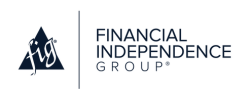Updated October 3, 2025, at 1:28 PM
Are you trying to understand the fees and charges associated with indexed universal life (IUL) insurance?
You’re not alone.
IULs are a popular type of permanent life insurance that provides a death benefit while allowing policyholders to accumulate cash value linked to a stock market index, such as the S&P 500.
While IUL policies offer growth potential and flexible premium payments, they also come with various fees that can significantly impact their overall cost and performance. Understanding these fees is essential for making informed decisions and ensuring the policy aligns with a client’s financial goals.
Standard Fees and Charges in IUL Policies
There are seven common fees or charges in IUL policies that you should know.
#1: Premium Load (Expense Charge)
This upfront charge is deducted from each premium payment before funds are allocated to the policy’s cash value. It’s designed to cover items like professional fees, administrative expenses, and state premium taxes. Depending on the insurer, the premium load can range between 5-10% of each premium payment.
For example, if a policy pays a $10,000 premium and the premium load is 6%, $600 will be deducted, leaving $9,400 to be allocated toward cash value and other policy expenses.
#2: Policy Administration Fees
These ongoing monthly fees cover the costs of issuing and maintaining the policy. These can include charges such as processing paperwork, customer support, and online account access.
Administration fees vary by insurer but typically range from $5-15 per month. Some policies impose higher administration fees in the contract’s early years and reduce them over time.
#3: Cost of Insurance Charges
The cost of insurance (COI) charge represents the cost of providing the death benefit. It’s influenced by factors such as the policyholder’s age, gender, health status, and the net amount at risk (the difference between the death benefit and cash value). These charges typically increase as the policyholder ages.
For example, a 35-year-old healthy male might have a relatively low COI charge, but the charge could be significantly higher by the time he reaches 60. Understanding these projected costs is crucial when evaluating the long-term affordability of a client’s IUL policy.
#4: Surrender Charges
IUL policies often have surrender charges if a policy is canceled within a specific time frame, typically the first 10-15 years. These fees are designed to recoup the insurer’s initial costs of issuing the policy. Surrender charges decrease over time and eventually disappear after the surrender period ends.
For instance, if a client decides to surrender their policy within the first five years, they could face a charge of 8-12% of their policy’s cash value. After ten years, the charge could potentially drop to 3%, and after 15 years, it could be considered for elimination.
#5: Rider Charges
Many IUL policies offer optional riders that provide additional benefits, such as accelerated death benefits, long-term care coverage, or a waiver of premium due to disability. While these riders enhance policy flexibility, they come at an extra cost. The charges depend on the type of rider and the insured’s age and health status.
For a popular long-term care rider, it might cost an extra $600-800 annually. At the same time, an accelerated death benefit rider could have a one-time or annual charge based on the policy’s face amount.
#6: Loan Interest Charges
Policyholders can borrow against their cash value through policy loans, but these loans accrue interest. The loan interest rate varies by insurer and policy type and can be fixed or variable. Some insurers offer low-interest loans, while others may charge rates as high as 6-8%.
For example, if a client takes out a $20,000 loan against the cash value with a 5% interest rate, they’ll owe $1,000 in interest for that year. If the loan isn’t repaid, the outstanding balance— including interest—will reduce the policy’s death benefit.
#7: Indexing Fees
Some IUL policies impose fees for managing the indexing strategy. These fees can include participation rates, cap rates, and spread fees, which can influence the growth potential of the cash value.
Participation rate: Determines how much of the index’s gain is credited to the policy. For example, if the S&P 500 increases by 10% and the policy’s participation rate is 80%, the credited interest would be 8%.
Cap rate: The maximum return a policy can earn. If the cap rate is 12% and the index returns 15%, only 12% would be credited to the policy.
Spread fee: A deduction from the index return. For example, if the spread fee is 3% and the index gains 10%, the credited amount would be 7%.
How These IUL Fees Impact Policy Performance
IUL fees and charges can affect a policy’s long-term growth. The cumulative effect of premium loads, administrative fees, and COI charges can slow cash value accumulation, especially in the policy’s early years.
If a policyholder pays $10,000 annually in premiums, they might only see $8,500 allocated to the cash value after fees. If the policy is projected to earn 6% annually, but fees reduce that return to 3.5%, the overall policy performance may be lower than expected.
As COI charges increase over time, the cash value growth must sufficiently cover these rising costs to keep the policy in-force.
Strategies to Minimize the Impact of Fees
While fees are an inherent part of IUL policies, there are ways to mitigate their impact:
- Maximize premium payments: Paying premiums at or near the IRS-imposed Modified Endowment Contract (MEC) limit allows more cash value to accumulate while spreading fixed charges over a larger premium base
- Choose policies with transparent fee structures: Some insurers offer more straightforward fee structures that provide better cost predictability
- Regularly review the policy: Conducting annual policy reviews can help ensure the policy is on track and that adjustments are made to optimize performance
- Leverage loan features: If borrowing against the policy, compare different loan interest rate structures and repayment strategies to minimize costs
- Consider alternative indexing strategies: Understanding cap rates, participation rates, and spread fees can help policyholders select the best crediting method for their risk tolerance and financial goals
Final Thoughts on IUL Fees and Charges
Understanding IUL fees and charges is crucial for you, as a financial professional, to maximize the benefits of a client’s policy while minimizing unnecessary costs.
By carefully analyzing fee structures and implementing strategies to optimize cash value growth, clients can ensure that their IUL policy remains a valuable part of their long-term financial plan.

Disclaimer: The information in this article is for educational purposes only and should not be considered financial advice.
Please consult a licensed financial professional for personalized recommendations.


